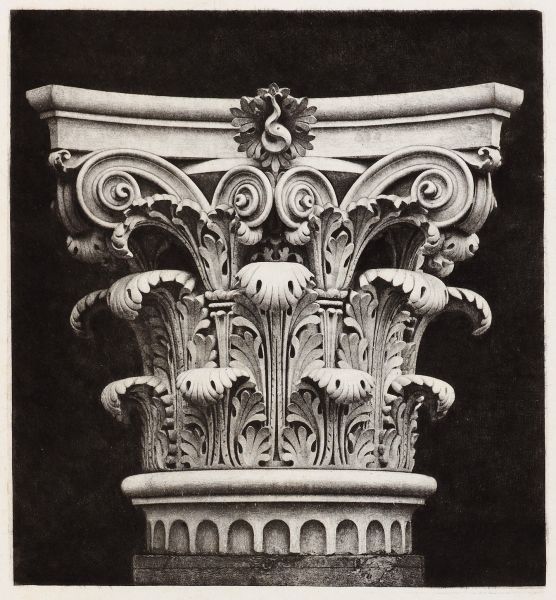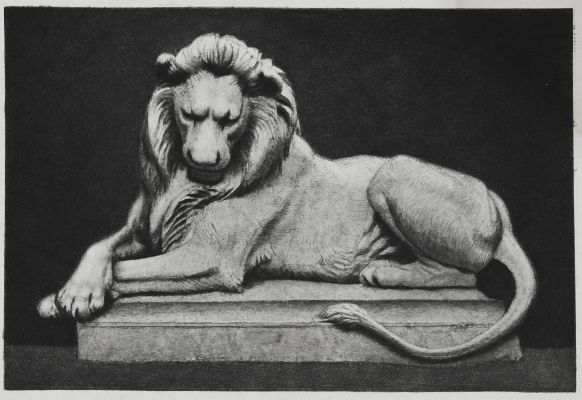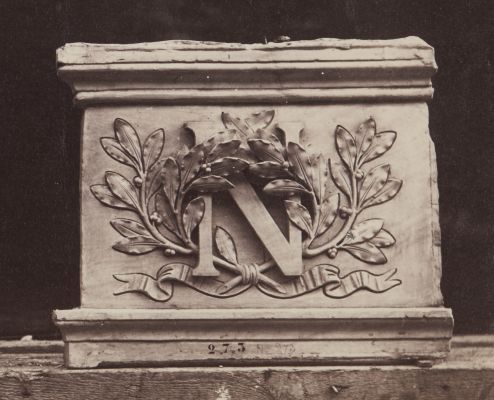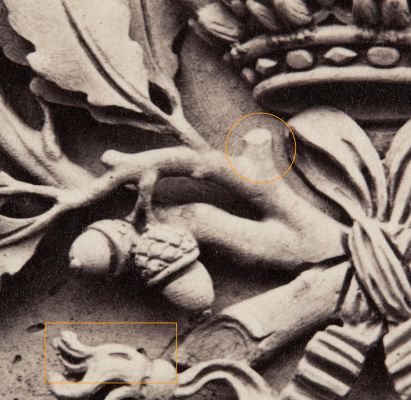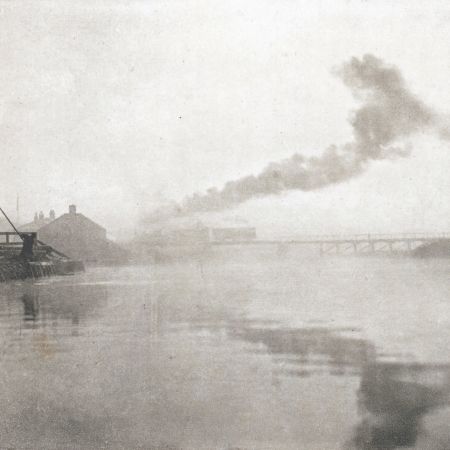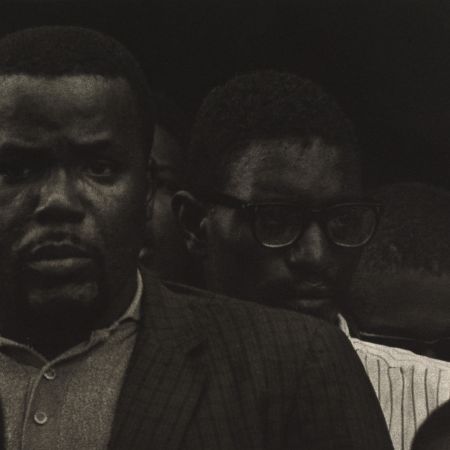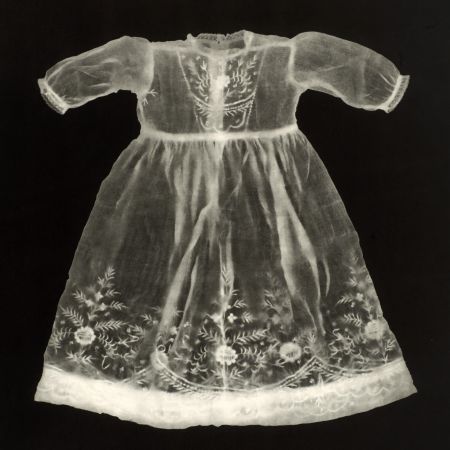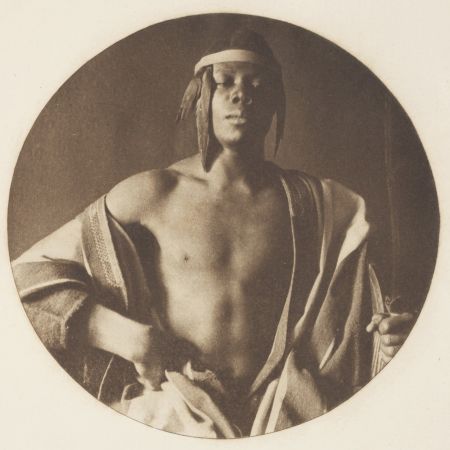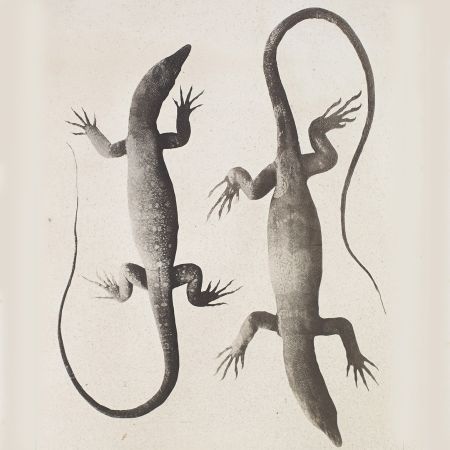Baldus’s Louvre Photogravures
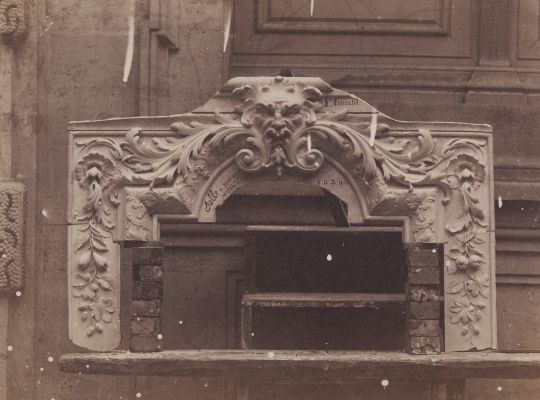
Edouard Baldus, pl 43 Ministére D’état, 1856 ca, albumen. This image was used for plate 43.
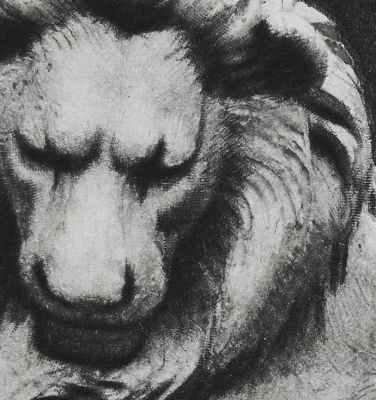
Detail showing Baldus’s extensive handwork.
His process yielded richly inked, velvety textured prints with an extraordinary clarity and fineness of detail, which he heightened occasionally with etched lines added by hand.

In this case we see that a leaf was first eradicated from its original spot on the sculpture and re-added by hand into the shadow of where it would have been had the image not been reversed.

Original position of leaf.

Baldus’s detailed hand-work. Considering there were three-hundred plates in the project, this was a massive undertaking. Find the original plate that this small section is taken from here.
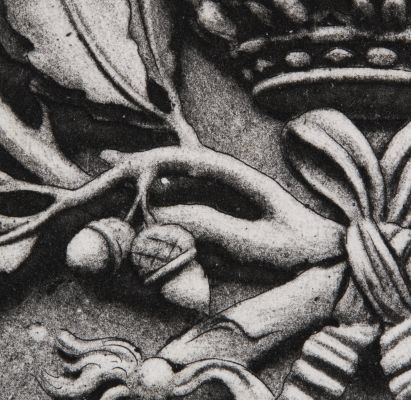
In another example, Pl 35 Louvre Facade sur le Carrousel, we observe aesthetic choices Baldus makes, taking liberties to enhance the finished product making it part his own.

Edouard Baldus, Tuileries Aile Sud (Façade sur le Quai) 1869 plate (1856 ca negative). This plate is a pre-publication proof or exhibition print. There is no identifying text that is present on the final published image. The version from the publication, labeled Tuileries, South Wing, Quay Facade, from Palais du Louvre et des Tuileries, 1869-71, can be found on the MET website.
References
Addleman-Frankel, Kate. After Photography?: The Photogravures of Édouard Baldus Reconsidered. , 2018.
Addleman-Frankel, Kate. Process of Selection: Édouard Baldus, The New Louvre Commission Photographs, and Palais Du Louvre Et Des Tuileries, Concordia University, Montreal, 2007
Daniel, Malcolm. The Photographs of Edouard Baldus. New York: Metropolitan Museum of Art, 1995
Daniel, Malcolm, “The Beginnings of Photogravure in Nineteenth Century France” (2001)
Gernsheim, Helmut. The History of Photography. London: Thames and Hudson, 1988.
Lacan, Ernest “Gravure héliographique,” Le Moniteur de la Photographie (1867),
Marbot, Bernard. Une Invention Du Xixe Siècle: Expression Et Technique: La Photographie: Collections De La Société Française De Photographie. Paris: Bibliothèque Nationale, 1976.
Monfort, Benito R, Alexis Gaudin, Ernest Lacan, and Marc A. Gaudin. La Lumière: Journal Non Politique … : Beaux-Arts, Héliographie, Sciences. Paris: Société d’héliographie, 1851
